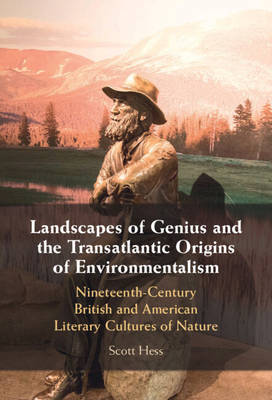
- Afhalen na 1 uur in een winkel met voorraad
- Gratis thuislevering in België vanaf € 30
- Ruim aanbod met 7 miljoen producten
- Afhalen na 1 uur in een winkel met voorraad
- Gratis thuislevering in België vanaf € 30
- Ruim aanbod met 7 miljoen producten
Zoeken
Landscapes of Genius and the Transatlantic Origins of Environmentalism
Nineteenth-Century British and American Literary Cultures of Nature
Scott Hess
Hardcover | Engels
€ 172,95
+ 345 punten
Omschrijving
During the nineteenth century, the idea of 'genius' became associated with natural landscapes on both sides of the Atlantic. Scott D. Hess explores how those associations defined the modern significance of nature and precipitated the emergence of National Parks and the environmental movement. William Wordsworth's identification with the English Lake District, Henry David Thoreau's with Walden, and John Muir's with Yosemite established the paradigm of the 'landscape of genius, ' through which authors and landscapes entered the nature-writing canon and national high culture. The book also explores the significance of race, gender, and class for such landscapes, as evidenced in writings by African American author Frederick Douglass; American woman writer Susan Fenimore Cooper; and British laboring-class poets Robert Burns, John Clare, and Ann Yearsley. Fundamentally reshaping how we understand nineteenth-century transatlantic cultures of nature, Hess reveals the ongoing legacy of the landscape of genius for environmental politics today.
Specificaties
Betrokkenen
- Auteur(s):
- Uitgeverij:
Inhoud
- Aantal bladzijden:
- 292
- Taal:
- Engels
Eigenschappen
- Productcode (EAN):
- 9781009561259
- Verschijningsdatum:
- 7/08/2025
- Uitvoering:
- Hardcover
- Formaat:
- Genaaid
- Afmetingen:
- 152 mm x 229 mm
- Gewicht:
- 557 g

Alleen bij Standaard Boekhandel
+ 345 punten op je klantenkaart van Standaard Boekhandel
Beoordelingen
We publiceren alleen reviews die voldoen aan de voorwaarden voor reviews. Bekijk onze voorwaarden voor reviews.








